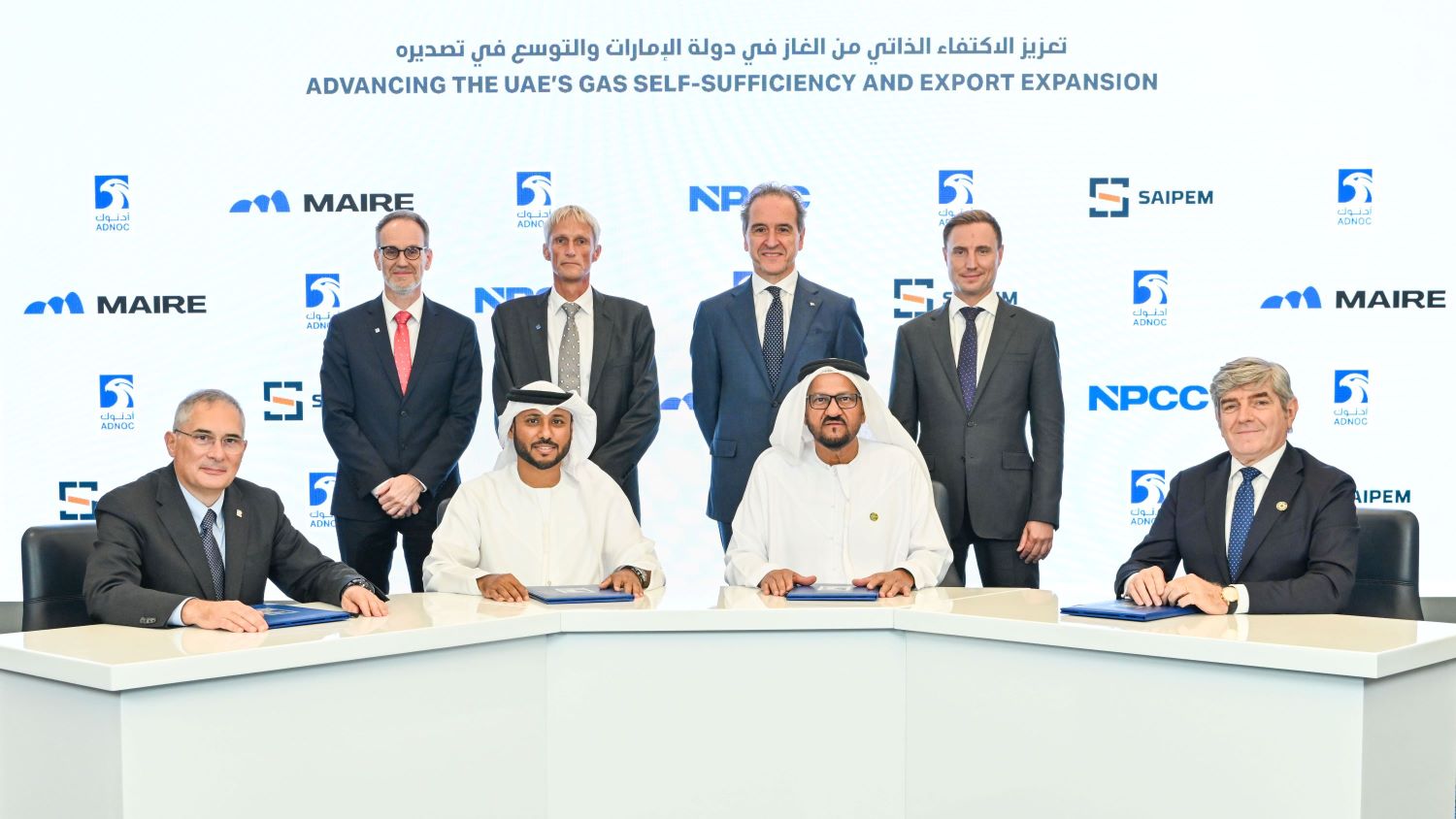ABU DHABI, UAE – ADNOC on Thursday announced the final investment decision (FID) and award of contracts for the Hail and Ghasha Offshore Development project.
The project aims to operate with net zero carbon dioxide (CO2) emissions, reinforcing ADNOC’s legacy of responsible energy production and supporting its Net Zero by 2045 ambition and accelerated decarbonisation plan.
The awards, which comprise two engineering, procurement and construction (EPC) contracts, were signed at ADIPEC, the world’s largest energy industry gathering.
The first EPC contract for the offshore facilities includes facilities on artificial islands and subsea pipelines.
It has been awarded to a joint venture between National Petroleum Construction Company and Saipem.
The second EPC contract will deliver the onshore scope, including carbon dioxide and sulphur recovery and handling. It has been awarded to Tecnimont.
Hail and Ghasha are part of Abu Dhabi’s Ghasha Concession, which is set to produce over 1.5 billion standard cubic feet per day (bscfd) of gas before the end of the decade, contributing to UAE gas self-sufficiency and ADNOC’s gas growth and export expansion plans.
Over 60 percent of the investment value of the entire project will flow back into the UAE’s economy under ADNOC’s In-Country Value (ICV) program, reinforcing the company’s commitment to ensuring more economic value remains in the country from the contracts it awards.
ADNOC Upstream Executive Director Abdulmunim Al Kindy said, “The final investment decision, for Hail and Ghasha, is a major milestone for ADNOC and our strategic partners.”
He said, “This pioneering project with net zero carbon dioxide emissions will significantly boost ADNOC’s carbon capture capacity as we work toward a lower carbon future.”
He added, “The project will drive in-country value, provide highly skilled career opportunities for UAE nationals and stimulate socio-economic growth.”
Al Kindy said, “Natural gas is an important transition fuel and ADNOC will continue to responsibly unlock its gas resources to enable self-sufficiency for the UAE, grow our export capacity and support global energy security.”
The Hail and Ghasha development design combines innovative decarbonization technologies into one integrated solution.
The project will capture 1.5 million tonnes per year (mtpa) of carbon dioxide, taking ADNOC’s committed investment for carbon capture capacity to almost 4 mtpa.
The carbon dioxide will be captured, transported onshore and safely stored underground, while low-carbon hydrogen is produced that can replace fuel gas and further reduce emissions.
The project will also leverage clean power from nuclear and renewable sources from the grid.
The carbon captured at Hail and Ghasha will support ADNOC’s wider carbon management strategy, which aims to create a unique platform that connects all the sources of emissions and sequestration sites to accelerate the delivery of ADNOC and the UAE’s decarbonization goals.
The final investment decision follows a recent announcement by ADNOC to double its carbon capture capacity target to 10 mtpa of carbon dioxide by 2030.









